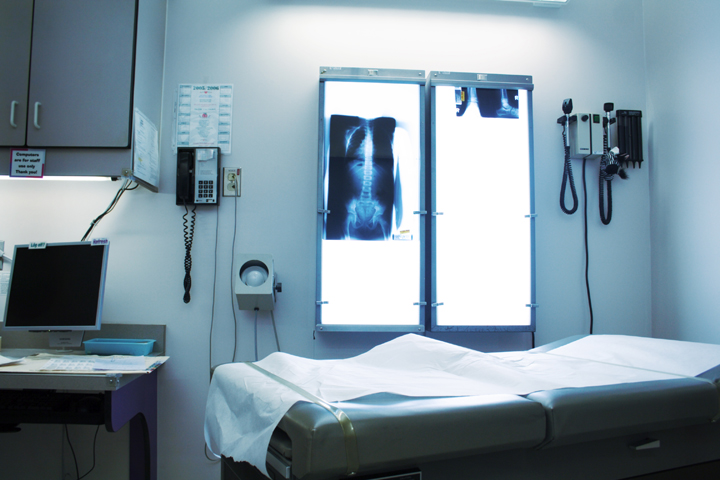THURSDAY, July 14, 2016 (HealthDay News) — The headlines are terrifying, and the story details are even worse as you read about a child who goes for a swim in a lake or river and then falls prey to a “brain-eating amoeba.”
The brain infection brought on by Naegleria fowleri, an amoeba that flourishes in warm open waters, can quickly prove fatal, according to the U.S. Centers for Disease Control and Prevention.
As disturbing as these reports are, parents don’t need to bar their kids from the local swimming spot due to fear of Naegleria, infectious disease experts say.
These cases make headlines because they are so unexpected and devastating, but the infection itself is “very, very uncommon,” said Dr. Amesh Adalja, a senior associate with the University of Pittsburgh’s UPMC Center For Health Security.
“You have to think about how many times people have exposure to water that has Naegleria in it, and how few cases we actually see every year,” said Adalja, who’s also a spokesman for the Infectious Diseases Society of America.
“Each case grabs the headlines because it is so rare but so severe. I don’t think you should restrict a child’s activities because of this,” he said.
In fact, between 1937 and 2013, there were only 142 cases of Naegleria-related brain infections reported. That works out to fewer than two infections per year, a 2015 study in the Journal of the Pediatric Infectious Diseases Society said.
“Considering the millions of times that kids jump into the water every summer, it’s a very low risk,” agreed Dr. Sunil Sood, chair of Pediatrics-Infectious Disease at Southside Hospital, in Bay Shore, N.Y.
Naegleria fowleri is found in warm bodies of fresh water, such as lakes, rivers and hot springs, according to the CDC. Because the amoeba prefers warm water, it’s most commonly found in southern states.
The amoeba infects people when contaminated water forcefully enters the nose, Sood said. It migrates from the sinuses into the brain, where it causes a severe brain infection called primary amebic meningoencephalitis (PAM).
While most cases occur from a person jumping into a lake or river, the infection also can occur during a sinus rinse using a neti pot filled with tap water, Sood added. People should always use water labeled “distilled” or “sterile” in a neti pot, according to the U.S. Food and Drug Administration. Or, you can boil water yourself and use it after it has cooled down to lukewarm — about five minutes, the FDA says.
A person can’t become infected with the amoeba by drinking contaminated water, the CDC says.
More cases have been reported to the CDC in recent years, causing some to wonder if climate change is allowing the amoeba to thrive in the south and range farther north. The journal article noted that four infections have occurred in more northern states — Indiana, Kansas and Minnesota — since 2010.
But Adalja said it’s just as likely that doctors are more aware of the amoeba, increasing the odds that the brain infection will be accurately diagnosed.
“You’re starting to see more reports, but it’s hard to discern if this is because people are much more attuned to the risk now in 2016 than they were in 1985, for example,” Adalja said.
Symptoms of PAM start about five days after brain infection, the CDC says. Initial symptoms can include headache, fever, nausea or vomiting. As the disease progresses, the person may suffer from a stiff neck, confusion, difficulty thinking, hallucinations, loss of balance and seizures.
“Basically it’s infecting the brain and the membranes surrounding the brain,” Adalja said. “Because of that, it causes a pretty big inflammatory response. You have this invader there, and you have the immune system attacking it, and the brain is caught in the middle.”
After symptoms start, the disease progresses rapidly and usually causes death within about five days. The fatality rate is roughly 97 percent; only three out of 138 people infected with Naegleria between 1962 and 2015 have survived, the CDC says.
Treatments are available for Naegleria infection. For example, the CDC keeps a supply of miltefosine, an investigational breast cancer drug, on hand for treating Naegleria because the drug has been shown to effectively kill off amoeba infections.
However, survival is rare because early symptoms are common with many other illnesses, and patients don’t get the appropriate treatment until it’s too late, Adalja said.
“It will just start out with people having fever, chills and headache,” he said. “At that point, it’s hard to tell what this might be.”
Adalja and Sood said people can lower their risk of infection by avoiding activities that could send water up their noses.
“Hold your nose before you jump in the water,” Sood said. “It’s a common-sense thing, but nobody thinks of it. That will prevent that pressure that allows water to shoot up through the nose.”
Concerned parents should keep a close eye on kids who’ve been swimming, he added.
“Go to the emergency room right away if your child has a headache and a fever, especially if it occurs after swimming or a sinus rinse with a neti pot,” Sood said.
More information
For more on the Naegleria fowleri amoeba, visit the U.S. Centers for Disease Control and Prevention.
Copyright © 2025 HealthDay. All rights reserved.

